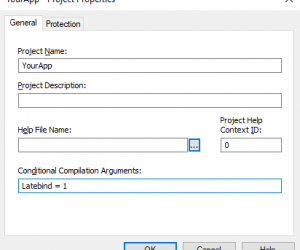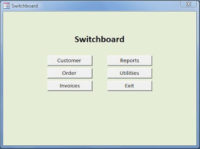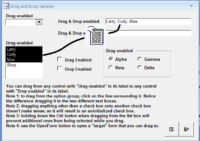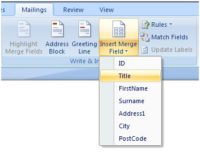In standard code, we make use of #LateBind conditional compilation constant, which is typically defined via project’s Conditional Compilation Argument in the dialog: NOTE: The dialog can be found via Tools → <project name> Properties, which is located below the Options menu item. The menu item caption will be different as it includes the project…
Access 2010: Unrecognized Database Format
I’ve been seeing more and more people having problems with the Unrecognized Database Format when creating or modifying an Access 2007 (accdb) format database in Access 2010 and then trying to open it again in Access 2007. The issue appears to be that Access 2010 does not have its own file format. When you add a…
How to Display a Form Automatically when your Application Opens
This is a quick tip on how to automatically display a form when the user opens your Access Application. In addition to improving User Friendliness, your database design will also appear much more professional. The step by step instructions below will display the Switchboard form in figure 1 immediately upon the application opening. This will…
Drag & Drop and Conditional Sorting in Microsoft Access
Drag and Drop In MS Access Doug was on a roll in January of 2004 when he wrote his article on drag and drop in MS Access. He tested it now using Access 2016 and it still works. This article shows you how to add drag-and-drop to your Access application using combinations of multi-value and…
Normalize all constraints’ & indices’ names
Constraints that are created by SSMA or by user via SSMS tend to have ugly names. Worse, auto-generated names are not stable across backups. Meaning if you restore a new database based on a copy of another database, the constraint names will change. That create huge problems during migrations because scripts that references constraint will…
Using Microsoft Access Data in a Mail Merge
Suppose you have an Access Database containing the names and addresses of your customers. Every now and again you may want or need to send a standard letter to each customer who has opted in to such mailings. However, you are aware that these letters are going to look so much better, and work so…
Access InStr() function to SQL Server equivalent
What is the SQL Server equivalent to Access InStr() function? TargetField: String expression being searched SearchValue: String expression being sought StartPosition: Starting position for each search (optional) Access SQL InStr(TargetField, SearchValue) InStr(StartPosition, TargetField, SearchValue) SQL Server CHARINDEX(SearchValue, TargetField) CHARINDEX(SearchValue, TargetField, StartPosition)
How to Migrate Data from Access to SQL Server using SSMA (SQL Server Migration Assistant)
SSMA is used to migrate Access databases to SQL Server. This tool converts the Access database to an SQL Server or an SQL Azure database. It is not bundled with SQL Server – you will need to download and install this tool separately. Check your system requirements and view the installation procedure for SSMA. Preparing…
“Truthy” and “Falsy” Values
VBA is quite very loose in what it deems “truthy” and “falsy”. For example, this procedure can produce surprising result: If Me.MyBitField.Value = True Then ‘It is true Else ‘It is false End If At the first glance, it seems expected that if the bit field is set to 1, it would succeed. But in…
Use properties instead of constant or magic numbers
A common programming mistake is to hard-code literals that corresponds to some property. That is particularly true with certain controls like tab controls & pages. The tab control exposes a Value property that indicates the current tab and the pages contains a PageIndex property that indicates its position in the tabs of the control. Thus,…







